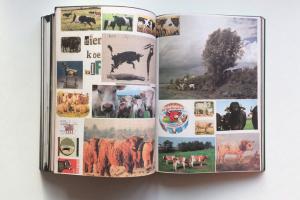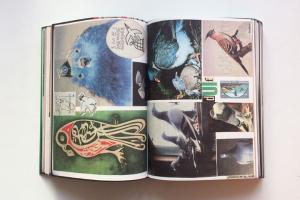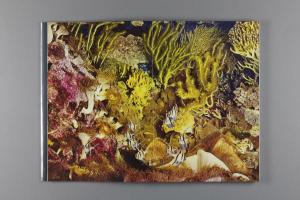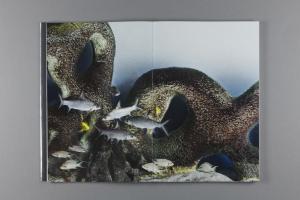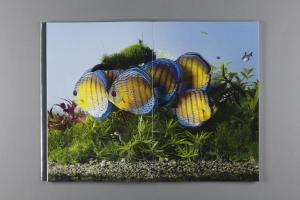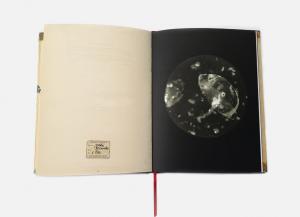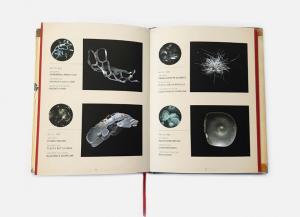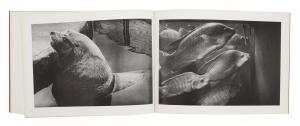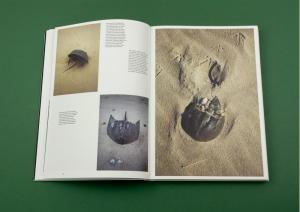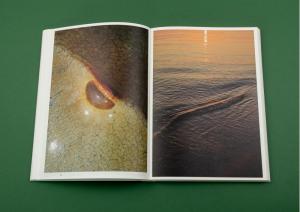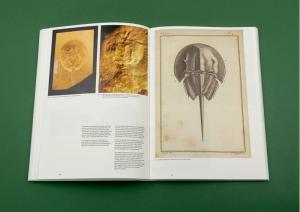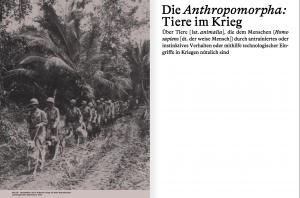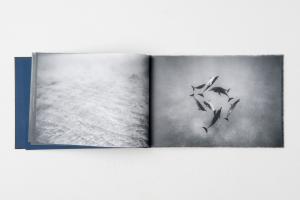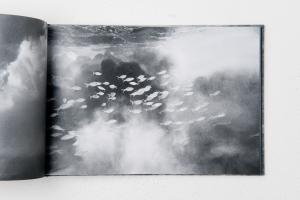Lous Martens about the book: "Seventeen years ago our grandson Jaap was born. That was the start of an animal book for Jaap. I used a dummy for the OASE journal of architecture and loosely pasted in pictures of animals that I had clipped from newspapers and magazines about art, literature and science. Plus stamps and photos from advertising brochures. Then Zeno was born and the same thing happened: an animal book for Zeno. Now I was working on two books at once. Then came Anna. Julian. Luca. At this point, there were five books-in-the-making on the table. And none of those five are finished yet. The children, as well as myself, enjoy seeing the small, ever-evolving changes. The additions. These books were never intended for the outside world where I had found all the pictures. Never intended to be published. Now they lie here, grouped into one big book, because others have convinced me it's what they deserve."
-
-
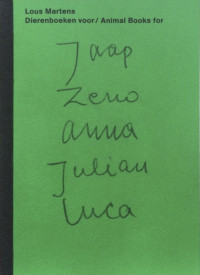
- Animal Books for Jaap Zeno Anna Julian Luca
- Lous Martens
- Roma Publications
- 2017
→more -
-
-
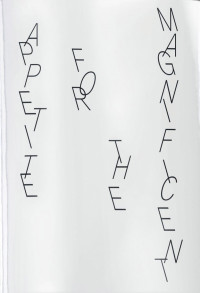
- Appetite for the Magnificent
- Tania Willen, David Willen, Jörg Scheller
- Edition Patrick Frey
- 2017
Appetite for the Magnificent is a photographic and essayistic exploration of the history and present-day world of the aquarium. David and Tania Willen focus their lenses on the pictorial, aesthetic dimension of present-day aquariums in Swiss zoos and Switzerland’s high-end aquarium scene: public and private labs in which “aquascapers” design animal-vegetable-mineral gardens of aqueous delights. These moving-picture aquascapes float between the poles of reality and virtuality, presence and absence, the animate and inanimate world. The fish swimming around in the tank may be present as living, breathing creatures, and yet we also perceive them through the glass as images of fish. In the Willens’ photographs, all shot from the front, the fish seem suspended in mid-air, an effect that brings to the fore the virtual side of the aquarium: it is nothing short of a precursor to the television set.
→more -
-
-
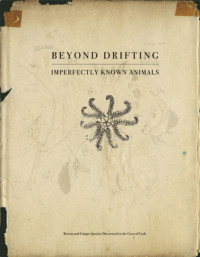
- Beyond Drifting: Imperfectly Known Animals
- Mandy Barker
- Overlapse
- 2017
Plankton form a diverse group of microscopic marine organisms that are unable to swim against powerful ocean currents; they exist in a drifting, floating state, enveloped in the black deep.
As fragile as they are, current scientific research shows that plankton ingest microplastic particles, mistaking them for food. Plankton are a crucial source of food for larger creatures up the food chain – compounding the grave impact of plastics on marine life and, ultimately, humans. Plastic debris is now ubiquitous in the Anthropocene, the period since humanity has had a significant impact on our global environment, and today nearly all living creatures are affected by its widespread contamination.
The plankton specimens in this work are beautifully photographed objects of marine plastic debris, recovered from the same location as naturalist John Vaughan Thompson’s plankton samples from 200 years ago. Long-exposure photographs record movements of recovered plastic objects floating in a black void, captured on expired film and with faulty cameras. Film grain is intentionally visible, alluding to microplastic particles being ingested. Each specimen has a new scientific name reflecting early Latin origins and containing the word ‘plastic’ hidden within its title.
→more -
-
-
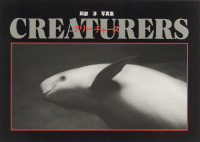
- Creaturers
- Jun Abe
- Village Press
- 1989
Published by Village Press in 1989, Jun Abe’s Creaturers marked the photographers first photobook of his career. Exhibiting the work at Picture Photo Space in Osaka in 1989, Abe’s Creaturers contains 42 black and white images which capture animals photographed from zoos, aquariums, and arboretums.
-
-
-
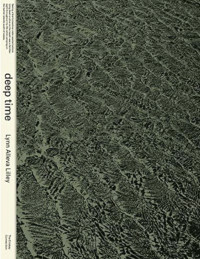
- Deep Time
- Lynn Alleva Lilley
- The Eriskay Connection
- 2019
The term ‘deep time’ refers to geological time and encompasses the age of the earth which scientists estimate to be about 4.5 billion years old. The photographs in this book were made in Lewes, Delaware (US), surrounding beaches and in laboratory using microscopes and emerged from an intense period of learning about the world of the horseshoe crab which unexpectedly became a sort of muse for Lynn Alleva Lilley.
No animal deserves the title ‘living fossil’ more than the horseshoe crab, seemingly unchanged since before the age of dinosaurs. A Japanese myth claims that they are the reincarnation of the souls of Japanese samurai warriors roaming the bottom of the sea. But it is the spawning of the horseshoe crab during the night’s high tides of the new and full moons of May and June that is especially thrilling. The horseshoe crab’s response to these universal forces, which has continued for more than 450 million years, triggers us to imagine ‘deep time’ and human’s emergence from it.
Through her poetic way of photographing Alleva Lilley manages to capture the wondrous beauty of our planet and the mystic life of the horseshoe crab in many different ways, resulting in an immersive photo book which references encyclopedias and the illustrative 19th century books on nature.
→more -
-
-
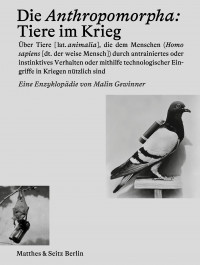
- Die Anthropomorpha: Tiere im Krieg
- Malin Gewinner
- Matthes & Seitz Berlin
- 2017
Fallschirmspringende Hunde, ferngesteuerte Haie, Raketen, die von Tauben gelenkt werden, Katzen mit implantierten Abhörgeräten : In diesem Buch geht es um Tiere, die der Mensch zu Kriegsteilnehmern gemacht hat. Die militärische Nutzung von Tieren spielt seit Anbeginn der Kriegsgeschichte eine entscheidende Rolle. Tiere sind ständige Wegbegleiter, jedoch keineswegs ebenbürtige Partner der Menschen. 32 erstaunliche, skurrile und bizarre Tiersoldaten dieses Buches zeigen, dass der Mensch keine Grenzen kennt, wenn es darum geht, sich gegenüber dem Feind einen Vorteil zu verschaffen. Woher kommt die Selbstsicherheit, mit der der Mensch sich die Fähigkeiten der Tiere zunutze macht ? Welche Konsequenzen hat das für Mensch und Tier, und wie und warum gerät der Vormachtsglaube der Menschen gerade zu Kriegszeiten ins Wanken?
→more -
-
-
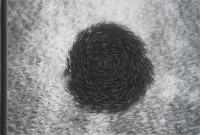
- Flowing
- Wayne Levin
- Datz Press
- 2014
American photographer Wayne Levin makes photographs of organic seascapes that are united into the underwater space. Made in space without gravity, as if flying in the sky, Levin’s black and white photographs remain as mystical illusions of light.
→more -
